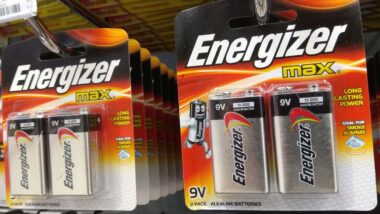Top Class Actions’s website and social media posts use affiliate links. If you make a purchase using such links, we may receive a commission, but it will not result in any additional charges to you. Please review our Affiliate Link Disclosure for more information.
A college student is an intensive care burn ward after taking a friend’s antibiotic on Thanksgiving Day when she began feeling ill, ABC News reports.
Yassmeen C.’s eyes, nose and throat began to burn, and the 19-year-old was rushed to the emergency room, her mother, Laura C., told ABC News. Blisters broke out all over her body. Medical personnel sedated her and placed her on a ventilator.
Yassmeen suffered a toxic reaction known as Stevens-Johnson Syndrome, a life-threatening skin disease manifested by a rash similar to a burn, open sores and skin peeling.
“Her face changed within four days,” Laura said. “I would wipe her face and all the skin was just falling off.”
Yassmeen was transferred to the University of California Irvine’s burn unit, where doctors said over 70 percent of her body was damaged. While she has had several surgeries, her feet continue to blister. Yasmeen is the mother of a four-month-old baby girl.
Stevens-Johnson Syndrome begins with flu-like symptoms, followed by a painful red or purplish rash that spreads and blisters. Then the top layer of the affected skin dies and sheds.
Fluoroquinolones, fluoride based drugs used to treat sinus, ear, respiratory and urinary tract infections, have been associated with Stevens-Johnson Syndrome, and its more deadly form, Toxic Epidermal Necrolysis, as a side effect.
Ciproflaxin (Cipro), ciloxan opthalmic, gemifloxacin (Factive), levofloxacin (Levaquin), moxifloxacin (Avelox), norfloxacin (Noroxin), and ofloxacin (Floxin) contain fluoride, a known neurotoxin that when attached with drugs can penetrate highly sensitive tissues in the body.
The Mayo Clinic reports that other culprits may be anti-gout medications, such as allopurinol, pain relievers such as acetaminophen (Tylenol and others), ibuprofen (Advil, Motrin IB and others) and naproxen sodium (Aleve), penicillin, anticonvulsant and antipsychotic medications used to treat seizures or mental illness, and radiation therapy.
Dr. Joshua Zeichner, a dermatology professor at New York’s Mount Sinai Hospital, told ABC News that with Stevens-Johnson Syndrome, while the skin is not actually burned, the skin barrier function has been compromised.
“Inflammation and blistering occur on the outer layer of skin as well as the lips, eyes and genitals, leaving the patient vulnerable to infection and unable to properly balance electrolytes and stay hydrated, Zeichner explained. As such, these patients are treated like burn victims.”
Flu-like symptoms precipitate Stevens-Johnson Syndrome, which are then followed by a potentially life-threatening skin disease manifested by a rash similar to a burn, open sores and skin peeling. Other signs of the disease include a purplish rash, painful blisters of the mucous membranes, blisters on the eyes, nose, mouth, and genitals, sloughing off of skin in large patches, joint and muscle pain and a burning sensation all over the body. It is sometimes described as the skin burning from the inside out.
Toxic Epidermal Necrolysis, the more severe form of the disease, is diagnosed when blisters meld and cover 30 percent of more of the body. The skin also peels off in layers, exposing the skin’s under layer, the dermis, and making the body ripe for infection.
Between 5 percent and 15 percent of SJS patients die from the side effects, while about up to 40 percent of TEN patients succumb to the disease. Those who survive risk numerous medical problems including a secondary skin infection (cellulitis), sepsis, blindness, internal organ damage and permanent skin damage.
Do YOU have a legal claim? Fill out the form on this page now for a free, immediate, and confidential case evaluation. The Stevens Johnson Syndrome attorneys who work with Top Class Actions will contact you if you qualify to let you know if an individual lawsuit or class action lawsuit is best for you. [In general, SJS lawsuits are filed individually by each plaintiff and are not class actions.] Hurry — statutes of limitations may apply.
ATTORNEY ADVERTISING
Top Class Actions is a Proud Member of the American Bar Association
LEGAL INFORMATION IS NOT LEGAL ADVICE
Top Class Actions Legal Statement
©2008 – 2024 Top Class Actions® LLC
Various Trademarks held by their respective owners
This website is not intended for viewing or usage by European Union citizens.
Get Help – It’s Free
Help for Victims of Stevens Johnson Syndrome
If you or a loved one were diagnosed with Stevens Johnson Syndrome (SJS) or toxic epidermal necrolysis (TEN) after taking a prescribed or over-the-counter medication, you may be eligible to take legal action against the drug’s manufacturer. Filing an SJS lawsuit or class action lawsuit may help you obtain compensation for medical bills, pain and suffering, and other damages. Obtain a free and confidential review of your case by filling out the form below.
An attorney will contact you if you qualify to discuss the details of your potential case at no charge to you.
Oops! We could not locate your form.













